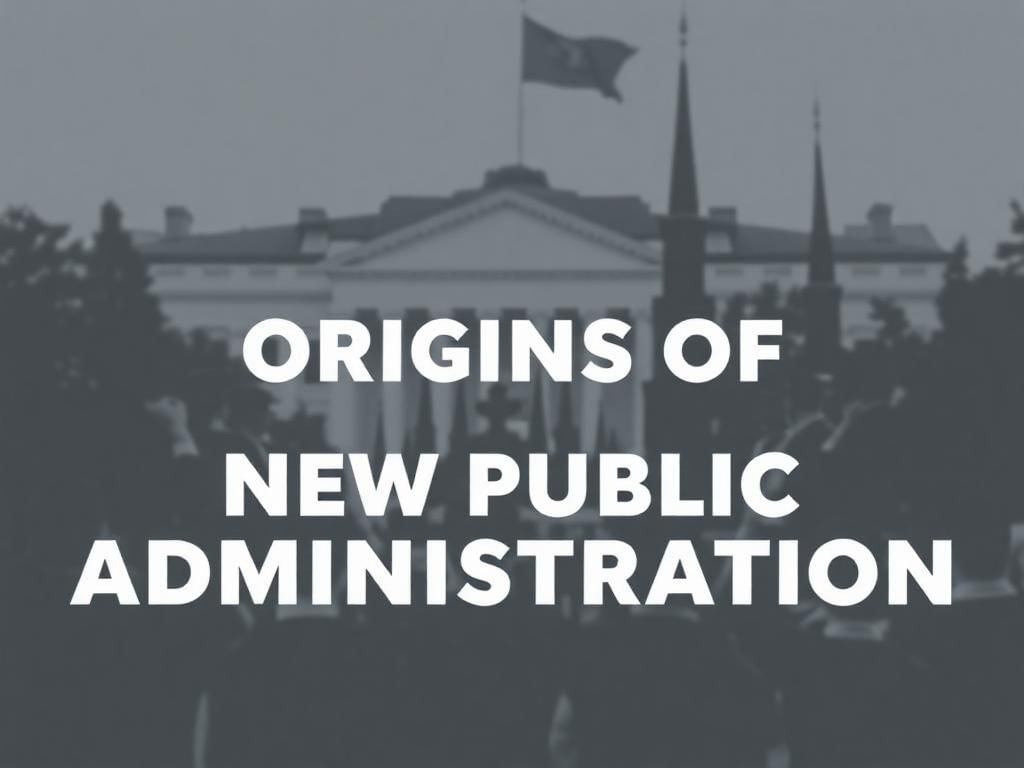New Public Administration | Public Administration Optional for UPSC (Notes) PDF Download
Introduction
Public Administration has gone through numerous changes since 1987. The earlier separation between politics and administration, as proposed by Woodrow Wilson, began to shift with the recognition of public administration as a scientific field. Influential concepts like F.W. Taylor’s Scientific Management and Elton Mayo’s Hawthorne Experiments subjected public organizations to deeper analysis, emphasizing efficiency. Post-World War II, ideas of informal organization, leadership, and teamwork grew in importance.- Herbert Simon’s work on administrative behavior emphasized logical thinking in policy-making, linking means and ends. Over time, Public Administration broadened its scope to include other disciplines like economics, political science, psychology, and sociology.
- A major turning point in Public Administration was the emergence of the New Public Administration (NPA), which prioritized responsiveness and social equity over the traditional focus on efficiency.
Origins of New Public Administration
The Turmoil in the United States:The genesis of NPA can be traced back to the 1960s when the United States experienced social unrest and turmoil due to war and internal conflicts. These challenging circumstances prompted public administration scholars to convene the Minnesbrooke conference, led by Waldo as the chairman.

Anti-Goals of N.P.A:
NPA sought to challenge the traditional notions of public administration by advocating for the following anti-goals:
- Anti-Positivism: NPA rejected the idea of defining public administration as value-free and instead promoted flexibility, receptiveness, and problem-solving capabilities within the field.
- Anti-Technical Approach: NPA emphasized the importance of recognizing the emotional and creative aspects of human nature, treating individuals as more than mere cogs in a bureaucratic machine. It sought to move away from bureaucratic and hierarchical structures.
Goals of New Public Administration
- Relevance: NPA recognized that the conventional focus on efficiency and economy within public administration had limited significance in addressing modern societal problems. Instead, NPA aimed to facilitate meaningful studies that delved into the realities of social life.
- Values: In contrast to the value-neutral stance of traditional public administration, NPA called for transparency regarding the values being served through administrative actions.
- Social Equity: NPA advocated for administrators to champion the underprivileged and exercise discretion to protect the interests of the poor.
- Change: Rejecting the status quo, NPA emphasized the need for innovation within administrative machinery to drive social change.
- Client Focus: NPA placed emphasis on providing goods and services to clients while also involving them in decision-making processes regarding the nature and delivery of those goods and services. By doing so, NPA challenged public administration to address major social issues proactively.
Emergence and Growth of New Public Administration
By the late 1960s, American society faced major problems like dissatisfaction with the Vietnam War, social conflicts, and environmental crises. These challenges led young intellectuals to question the efficacy of the political and administrative systems. The call for a more human and value-oriented administration led to the birth of NPA, aiming to restore public purpose and social equity in government service delivery.Between 1967-68, significant milestones marked the emergence of NPA:
- Honey Report on Higher Education for Public Service: Highlighted issues in public administration as a discipline, such as inadequate funding and lack of communication between scholars and practitioners.
- Philadelphia Conference on the Theory and Practice of Public Administration: Emphasized the need to expand the scope of public administration to deal with social problems.
- Minnowbrook Conferences I & II: Focused on social equity and the relevance of public administration in addressing contemporary issues.
The Philadelphia Conference
In 1967, the American Academy of Political and Social Sciences held a conference chaired by James C. Charlesworth. Key outcomes of the conference included:
- The need for flexibility in the scope of public administration to adapt to growing governmental responsibilities.
- Rejection of the traditional dichotomy between policy and administration, recognizing their interconnectedness.
- Public administration was encouraged to focus on pressing social issues such as poverty and unemployment.
- Emphasis was placed on promoting social equity, administrative efficiency, and ethics.
- The need for greater management flexibility to enhance effectiveness in government services was highlighted.
This conference laid the groundwork for the Minnowbrook Conference in 1968.
The First Minnowbrook Conference
The First Minnowbrook Conference in 1968, organized by Dwight Waldo, aimed to examine how public administration could better address social concerns and become a change agent for society. This event marked the formal birth of New Public Administration. Key concerns included:
Key concerns included:- Adopting a public policy approach that would influence the quality of governance.
- Focusing on social equity alongside efficiency in policy implementation.
- Recognizing that administrators are more than just policy implementers and emphasizing the importance of ethics and responsibility.
- Supporting the reduction of outdated government agencies.
- Encouraging a government that manages change, not just growth.
- Advocating for citizen participation in public administration.
- Challenging the traditional hierarchical structures of public organizations.
Advantages of New Public Administration
NPA brought several advantages to the field of public administration, shaping its evolution and relevance:- Malleability and Perfectibility of Mankind: NPA viewed mankind as adaptable and capable of improvement, focusing on personal and organizational values or ethics.
- Alignment with Political Science: By emphasizing normative theory, philosophy, social concern, and activism, NPA bridged the gap between public administration and political science.
- Emphasis on Social Equity, Innovation, and Change: NPA prioritized social equity, innovation, and change, aligning administrative practices with the needs of diverse societies.
Goals of New Public Administration
Five primary goals were identified:- Relevance: Public administration should address contemporary issues rather than focusing only on efficiency and economy.
- Values: The discipline should be guided by human ethics, justice, freedom, and equality.
- Social Equity: Public administration should promote distributive justice and social equity.
- Change: Administrators should act as change agents, ensuring that public administration adapts to societal needs.
- Client Orientation: Public administration should prioritize the needs of clients (citizens) and become more people-oriented.
Anti-Goals of New Public Administration
Robert Golembiewski identified three anti-goals:- Anti-Positivism: Reducing the rigidity in administration by embracing uncertainty and adaptability.
- Anti-Technology: Rejecting the treatment of human beings as mere tools to achieve efficiency.
- Anti-Hierarchy: Criticizing hierarchical structures for stifling innovation and isolating administrators.
Criticisms of New Public Administration
Despite its strengths, NPA faced criticism for several reasons:- Anti-Theoretic: Accused of lacking theoretical grounding.
- Anti-Positivist: Criticized for rejecting positivist approaches.
- Anti-Management: Challenged for encroaching on the domain of political institutions, processes, and leadership.
New Public Administration II: Synthesis of Public and Private Management
Building upon the foundations of NPA, New Public Administration II integrated elements from both public and private management approaches. It focused on performance appraisal, managerial autonomy, cost-cutting, downsizing, and de-bureaucratization. Additionally, the government was seen as a facilitator in this approach.Features of New Public Administration II
- Catalytic Government: The government is envisioned as a catalyst, encouraging collaboration between the public sector, private sector, and NGOs to solve societal problems.
- Community-Owned Government: NPA II emphasizes empowering citizens to solve their own problems, reducing bureaucracy's control over various services.
- Competitive Government: Creating competition among service providers helps improve performance and reduce costs.
- Mission-Driven Government: A goal-oriented approach replaces rigid rules, allowing the government to be more responsive and adaptable.
- Result Orientation: Target achievement and mission-directed efforts are prioritized to ensure desired outcomes.
- Customer-Driven Government: NPA II shifts focus towards the impact on clients rather than the institutions themselves.
- Enterprising Government: Generating revenue becomes a focus, moving beyond mere expenditure.
- Anticipatory Government: Proactive approaches are adopted, avoiding a reactive "firefighting" stance. Built-in responsiveness to meet changing circumstances is vital.
- Decentralization: NPA II encourages participatory management, teamwork, and a shift from hierarchical structures.
- Market-Oriented Government: Market mechanisms are favored over bureaucratic ones, and human resources methods are utilized to motivate employees and encourage proactive service delivery.
According to George Frederickson, key features of NPA include:
- Change and Responsiveness: Public administration must be flexible and responsive to social, political, and economic changes.
- Rationality: Administrative actions should be evaluated from both government and citizen perspectives.
- Structural Changes: Small, flexible, and decentralized hierarchies should be adopted.
- Multi-disciplinary Approach: Public administration should integrate knowledge from various fields, such as political science and human relations.
The Second Minnowbrook Conference
- Held in 1988, twenty years after the first conference, Minnowbrook II focused on the changing role of government in an era of privatization and reduced government intervention. The conference sought to compare the concerns of the 1960s with the issues of the 1980s, recognizing the growing complexity of public administration.
- Themes such as ethics, social equity, and human relations continued to dominate the discussions, but new topics like leadership, technology, and legal perspectives also emerged.

Supporting Practices
NPA II incorporates several supporting practices to enhance governance:- Total Quality Management: Delivering high-quality services to employees.
- Re-engineering: Eliminating inefficiencies and increasing productivity by reevaluating and restructuring jobs and processes.
- Benchmarking: Comparing work and methods against best practices to improve quality and output.
- Empowerment: Encouraging employees to take initiatives, make decisions, and monitor results.
Major Thrust Areas
Eleven key themes emerged from Minnowbrook II, which included:- Social equity had progressed significantly since Minnowbrook I.
- Public administration was viewed as central to promoting democratic values.
- The debate between normative and behaviorist perspectives continued.
- Diversity in society and the workforce was recognized as essential.
- Radical reforms were considered short-term goals.
- There was a reluctance to examine interdisciplinary issues.
- Negative attitudes towards business practices were prevalent.
- Public personnel systems needed innovation to improve productivity.
- Technological issues were largely ignored.
- Specific roles of government were not fully addressed.
Evaluation of New Public Administration
NPA has made significant contributions to the field of public administration by advocating for responsiveness to social issues and promoting social equity. However, there were also criticisms, with some scholars arguing that it didn’t offer anything radically new. Despite this, NPA managed to redefine public administration by focusing on issues like client orientation, participation, and responsiveness to societal needs.Conclusion
New Public Administration, which emerged in the 1960s, brought attention to critical concerns like social equity, change, and citizen participation. Over the next two decades, changes in governance, including privatization and regulatory policies, shaped the direction of public administration. Minnowbrook II addressed the future challenges of public administration, emphasizing interdisciplinary approaches and calling for a theory that integrates insights from various fields.FAQs on New Public Administration - Public Administration Optional for UPSC (Notes)
| 1. What are the primary goals of New Public Administration? |  |
| 2. How did New Public Administration emerge and grow? |  |
| 3. What are the advantages of implementing New Public Administration? |  |
| 4. What criticisms have been directed at New Public Administration? |  |
| 5. What are the key features of New Public Administration II? |  |






















